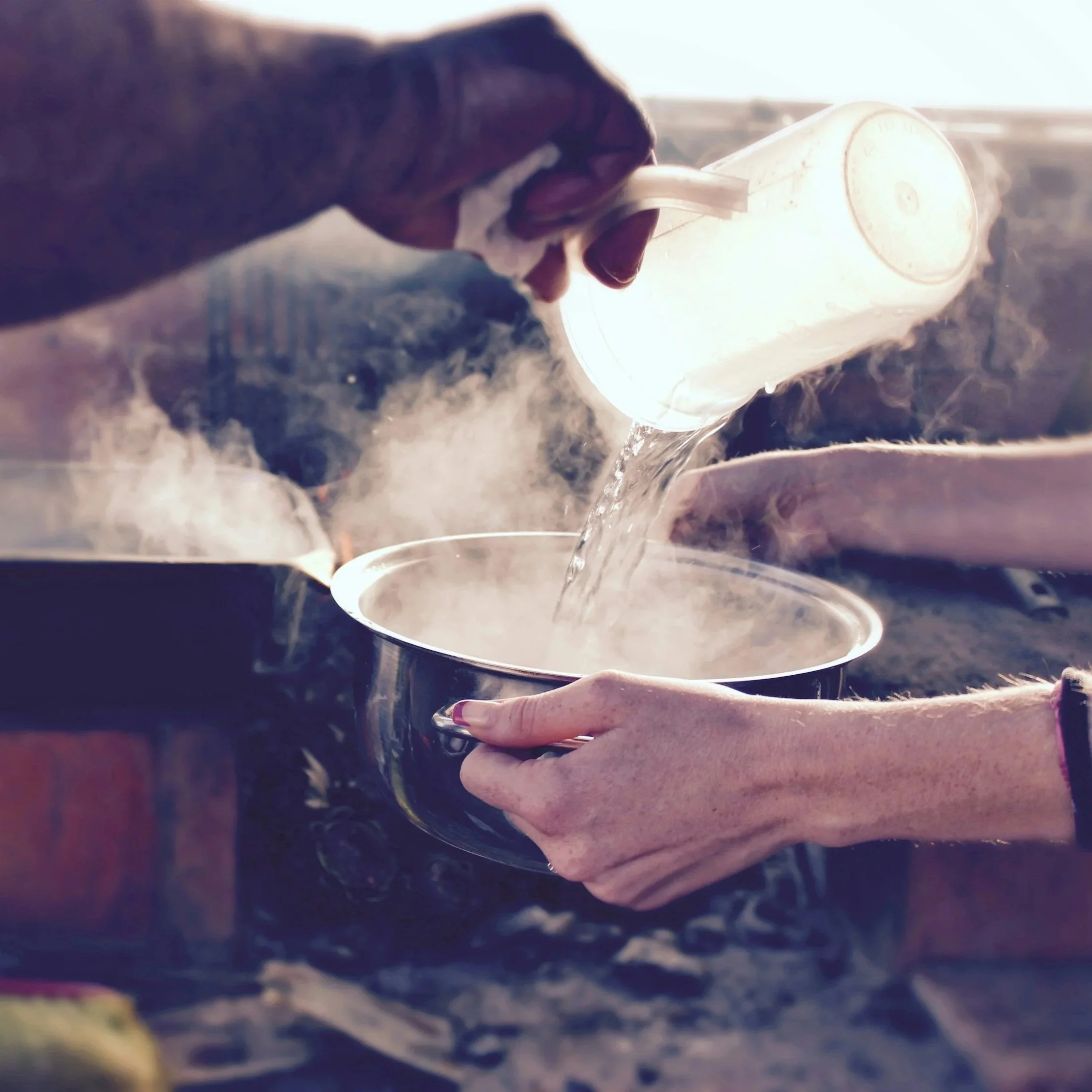Water may run cloudy at first, but that’s just the buildup leaving the tank—and taking excess energy costs with it.
Draining The Tank Regularly
Water heaters with tanks gradually collect sediment from minerals in the water supply. That sediment settles at the bottom and creates a layer of gunk that insulates the heating element, forcing it to work harder and longer. Draining the tank once or twice a year flushes that buildup and restores efficiency.
A full flush removes sediment completely, while a partial drain helps maintain performance between deeper cleanings. The process only takes a few minutes, but saves wear on the system and keeps hot water flowing consistently. Water may run cloudy at first, but that’s just the buildup leaving the tank—and taking excess energy costs with it.
Inspecting The Anode Rod
The anode rod lives inside the tank and sacrifices itself to protect the metal lining. It attracts minerals and corrosion before they attack the tank walls. Over time, the rod deteriorates, and once it disappears, the tank becomes vulnerable.
Checking and replacing the anode rod every few years extends the life of the water heater. If it looks crusty, thin, or eaten away, it’s time for a swap. New rods are inexpensive compared to the cost of replacing the entire tank, and they provide silent, steady protection year after year.
Testing The Temperature And Pressure Relief Valve
The T&P valve releases pressure when things inside the tank heat up beyond safe limits. It’s a vital safety feature that rarely activates—unless something goes wrong. Testing it occasionally makes sure it’s still working and not stuck or clogged.
A quick lift of the valve’s tab should release water into the discharge pipe. If nothing happens or water continues to flow after releasing the tab, the valve needs replacement. Letting a faulty valve go unchecked risks serious damage or even tank failure.
Adjusting The Thermostat
Water heaters typically arrive preset to 140 degrees Fahrenheit. That temperature may feel satisfying on a cold morning, but it’s higher than necessary for daily use and contributes to energy waste. Lowering the thermostat to 120 degrees saves power, prevents scalding, and reduces wear on internal components.
Small temperature tweaks make a big difference. Lower settings allow the heater to cycle less frequently, and the reduction helps prevent mineral buildup while cutting energy costs. The change feels minor but pays off over time.
Wrapping The Tank And Pipes
Tank heaters lose heat through their metal walls and the surrounding pipes, even when no hot water is in use. That constant loss adds up, especially in unconditioned spaces like garages or basements. Wrapping the tank with an insulation blanket helps retain heat and reduces standby losses.
Adding pipe insulation to the first several feet of hot water piping also helps. It keeps heat in the water longer, reduces wait times at the faucet, and limits reheating cycles. The materials are inexpensive, and installation is quick—a straightforward upgrade with a big return.
Checking For Leaks
Small leaks around the base of the tank, along valves, or at pipe joints may not seem urgent, but they usually signal trouble ahead. Moisture promotes rust, which weakens the tank and shortens its life. Hidden leaks under the unit or inside utility closets can go unnoticed for weeks.
Routine checks around the water heater’s base and fittings help catch problems early. A little dampness often points to loose fittings, worn seals, or pressure issues. Tightening connections or replacing a faulty valve solves many leaks before they escalate into serious damage.
Listening For Odd Sounds
Water heaters make noise when sediment builds up or components start to wear. Popping, rumbling, or crackling sounds mean the heating element is working against a barrier of minerals. That friction wastes energy and signals early warning signs that maintenance is overdue.
Draining the tank usually quiets things down. If noises persist, the heating element may need replacement. Ignoring those sounds can shorten the system’s life and lead to higher bills—or worse, a cold shower when least expected.
Keeping The Area Clear
Water heaters need breathing room. Storing boxes, chemicals, or tools around the unit restricts airflow and increases the risk of fire, especially for gas models with open flames or pilot lights.
Keeping at least two feet of space around the tank prevents accidents and gives service technicians room to work. It also helps identify leaks, corrosion, or performance problems more easily. A clutter-free zone promotes safety and efficiency at the same time.
Scheduling Annual Professional Inspections
While DIY maintenance covers many bases, some checks require a professional eye. Technicians test electrical connections, inspect internal components, verify pressure readings, and confirm safety mechanisms are working as they should.
An annual inspection helps spot developing issues before they lead to failure. Professionals also offer advice on replacement timelines, upgrades, or adjustments that improve efficiency. With regular attention, a water heater delivers reliable performance for years longer than a neglected one.
Evaluating Water Quality
Hard water leaves mineral deposits behind. That buildup clings to the heating element in tankless units or settles in tank models, making it harder to heat water effectively. The result is longer cycles, reduced output, and a shortened system lifespan.
Installing a water softener or an inline filter protects the heater and improves performance. Better water quality also means cleaner dishes, softer laundry, and fewer plumbing issues throughout the home. Addressing hard water early pays dividends in comfort and cost savings.
Maintaining Ventilation For Gas Units
Gas water heaters vent exhaust outdoors, but vents sometimes clog or shift over time. A blocked or poorly sealed vent compromises performance and creates safety risks, especially when carbon monoxide has nowhere to go.
Visual checks for obstructions and loose fittings prevent dangerous backdrafts. Professionals test for proper airflow and correct any misalignments, restoring safety and system integrity. A steady draft equals a healthy heater.
Cleaning Intake Screens On Tankless Units
Tankless water heaters draw cold water through a fine mesh screen that filters debris and sediment. Over time, that screen clogs, especially in areas with hard water or older plumbing. A blocked screen reduces flow, overheats the unit, or causes short cycling.
Cleaning the screen periodically restores normal flow and prevents strain on the heating element. Accessing the screen is usually simple, and a clean water path supports smoother operation and better heat exchange.
Upgrading Aging Components
Like any mechanical system, water heaters wear down. Heating elements weaken, thermostats drift out of calibration, and valves lose their tight seals. Replacing aging parts before they fail keeps the system running efficiently and avoids emergency replacements.
Professionals help identify worn components and offer upgrade options to match current demand. A little proactive maintenance protects comfort and supports stable water temperatures all year long.
Balancing Household Water Pressure
High water pressure might seem harmless, but over time, it hammers plumbing fixtures and water heaters alike. Excessive pressure increases wear on seals, fittings, and valves. It can also trip the T&P valve and cause leaks.
Installing a pressure-reducing valve (PRV) or checking system pressure during annual inspections helps prevent overworking the heater. Keeping pressure in check extends system life and reduces the risk of unexpected breakdowns.
Flushing Tankless Heat Exchangers
Tankless water heaters need descaling to prevent lime buildup in their heat exchangers. Over time, that buildup reduces heat transfer, forces longer cycles, and clogs internal pathways.
Annual flushing with a descaling solution or vinegar keeps everything clean. Most units feature service ports for easy flushing, making the process straightforward with the right tools. Regular care supports smooth flow and long-term performance.
Supporting The Unit With A Drip Pan
A simple drip pan under the tank catches minor leaks and gives early warning of trouble. In homes without floor drains or located above finished spaces, the pan provides a buffer that protects floors, ceilings, and valuables below.
Paired with a water alarm, a drip pan prevents small leaks from turning into disasters. It’s a one-time investment that pays off in peace of mind and easier cleanup if problems develop down the road.
Using Maintenance To Extend Comfort
Routine maintenance keeps water heaters from becoming surprise headaches. With just a little attention, they perform quietly in the background, supporting hot showers, clean dishes, and all the small comforts of daily life. The combination of homeowner care and professional support makes all the difference between dependable warmth and inconvenient cold spells.
If you need an honest, dependable plumber in the Phoenix, Mesa, Tempe or Chandler area, call Jimmy today!




